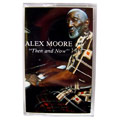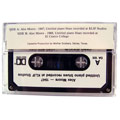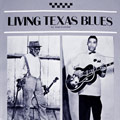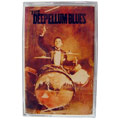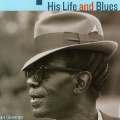Alex Moore
Then and Now
About
Details: Audio Cassette, 1989, Produced by Alan Govenar, Digitally Mastered by David and Nancy Lamb
Track Listing: Alex Moore -947; Untitled piano blues recorded at KLIF Studios; Alex Moore - 1988; Untitled piano blues, recorded at El Centro College
Alex Moore said that there was "an old piece of piano in every shack and alley" when he was growing up. He taught himself to play by watching others and practicing whenever he got a chance. Over the course of his life Moore developed a distinctive improvisatory piano style that included elements of blues, ragtime, barrelhouse, stride, and boogie-woogie. He combined steady bass figures with his left hand with fluid right hand melodies. The first half of the songs were recorded originally in 1947 at KLIF studios, commissioned by Walter E. Wilden, proprietor of the Southern Steak House where Moore worked as a dishwasher. The other half of the songs were recorded on a Steinway piano in an empty auditorium in July 1988 during the production of the film "Black on White/White and Black" on the life and career of Alex Moore. The recordings on this audiocassette tape were produced by Alan Govenar and, funded by Documentary Arts, Inc.
Liner Notes
The piano blues of Alexander Herman Moore, Sr., were a deep expression of the joys and sorrows of his day-to-day life. Born November 22, 1899 in the Freedman’s Town area of Dallas, he died January 20, 1989 in his sleep on a city bus without a will and without the resources to provide for his own burial. The son of a candy maker, Alex Moore went to work at the age of ten after his father died. While he was growing up, Moore said that there was “an old piece of piano in every shack and alley” in the State-Thomas, Central Tracks. And Deep Ellum areas of the city. He taught himself to play by watching others and practicing whenever he got the chance. Over the course of his life Moore developed a distinctive improvisatory piano style that included elements of blues, ragtime, barrelhouse, stride, and boogie-woogie. He combined steady bass figures with his left hand with fluid right hand melodies. His lyrics were both traditional and original and were a response to his playing of the piano, which was itself a response to the moment at hand. Moore’s approach to the piano was intuitive and took shape in performance.
The recordings on this tape illustrate the depth and evolution of Alex Moore’s piano style from structured blues and rags to rambling improvisation. The songs on side A were originally recorded in 1947 at KLIF studios, commissioned by Walter E. Wilden, proprieter of the Southern Steak House where Moore worked as a dishwasher. These songs, however, were unreleased and the location of the masters were unknown until 1987 when they were found in an estate sale. The songs on side B were recorded on a Steinway piano in an empty auditorium at El Centro College in July, 1988 during the production of the film “Black on White/ White and Black” on the life and career of Alex Moore.
The contrast in Moore’s performance style is significant. In 1947, he thought clearly in terms of discrete songs that might be issued on a record or for broadcast. In these recordings Moore demonstrates his dexterity at the piano, as well as his capacity in singing and whistling, a skill that earned him the name “Whistlin’ Alex Moore.”
Although Moore first recorded in 1929 and continued to appear on recordings over each of the next five decades, he spent most of his life supporting himself in other occupations and performing blues for his personal pleasure. In 1987 he was awarded a National Heritage Fellowship from the National Endowment for the Arts.
In his later years Moore modified his approach to the piano. He continued to integrate traditional elements into his playing, but his performance style became more contemplative and improvisatory. He played what he felt, often changing tempo in the middle of a piece, and hummed as much as he sang. The lyrics combine the phrasing of his earlier recordings with autobiographical and historical details that were at once bawdy and comic, ironic and grim. The spontaneity of his playing reflected the immediacy with which he lived and the unexpectedness of his death.
Alan Govenar
Dallas, 1989
